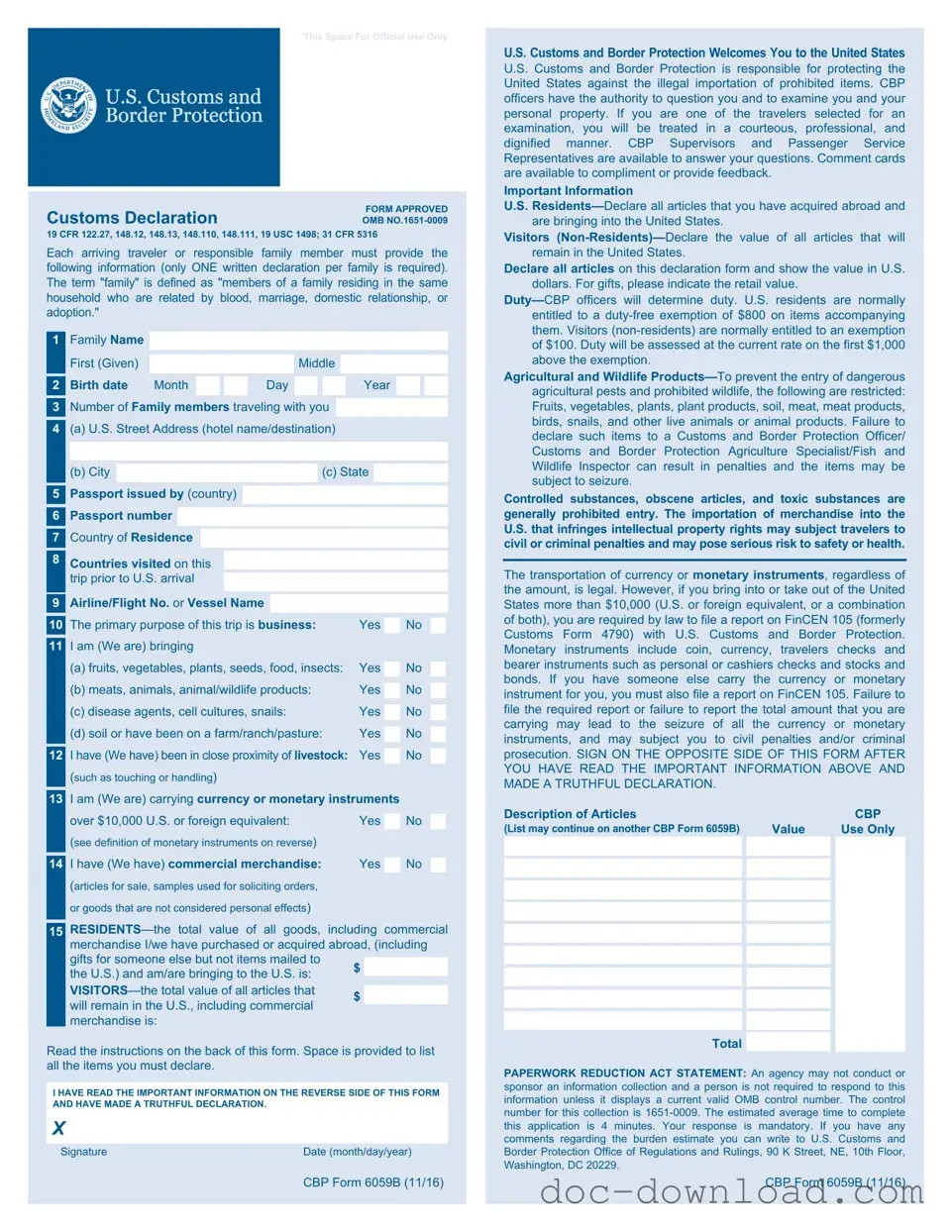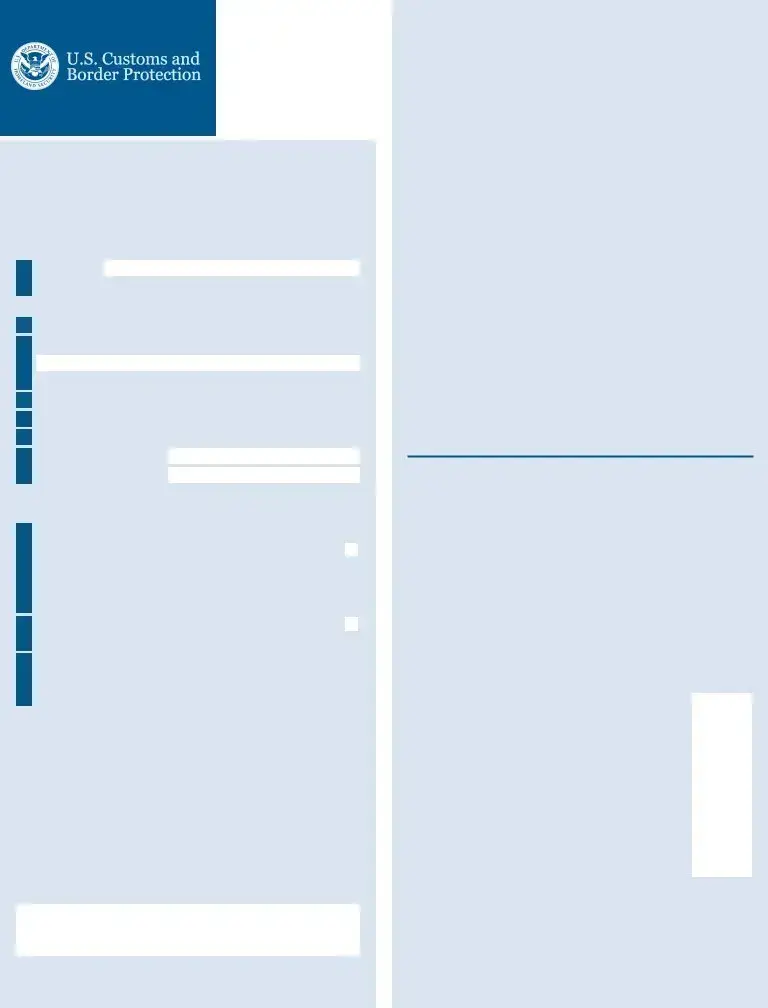The CBP 6059B form is similar to the CBP 7507 form, which is used for declaring merchandise upon entry into the United States. Like the 6059B, the 7507 requires travelers to provide information about items they are bringing into the country. Both forms aim to ensure that travelers comply with U.S. customs regulations. The 7507 form is specifically focused on goods, while the 6059B includes broader questions about personal items and currency. Travelers must complete these forms to facilitate a smooth entry process.
Another document that shares similarities with the CBP 6059B form is the CBP 3299 form, which is used for declaring personal effects and household goods being imported into the U.S. The 3299 form focuses on items that are not for sale, such as personal belongings and gifts. Like the 6059B, it requires detailed information about the items being brought into the country. Both forms help customs officials assess what is being imported and ensure that travelers are aware of any restrictions or duties that may apply.
The CBP 7501 form is also comparable to the CBP 6059B. This form is used for entry summary and provides detailed information about imported goods. While the 7501 is more technical and aimed at importers, it shares the goal of ensuring compliance with customs regulations. The 6059B focuses on personal declarations, while the 7501 deals with commercial imports. Both forms require accurate information to prevent delays in processing and to uphold U.S. laws.
The I-94 form, which records the arrival and departure of non-U.S. citizens, bears similarities to the CBP 6059B form as well. Travelers must complete the I-94 to document their entry into the U.S. Both forms require personal information and are critical for maintaining lawful status in the country. The I-94 form is specifically for tracking immigration status, while the 6059B is more about customs declarations. Nevertheless, both are essential for a smooth entry experience.
Additionally, the CBP 1302 form, which is used for declaring certain agricultural products, has similarities to the 6059B form. Both forms require travelers to disclose specific items they are bringing into the U.S. The 1302 form focuses on agricultural products that may pose a risk to U.S. agriculture, while the 6059B covers a broader range of items. Both are vital for ensuring that travelers comply with regulations that protect U.S. resources.
In the context of legal documentation, understanding various forms is essential for ensuring compliance and protection, much like the role of the Colorado PDF Forms which provide critical templates for agreements that protect parties involved in various transactions.
The Customs Declaration form used by airlines is another document akin to the CBP 6059B. This form is often distributed during flights and requires passengers to declare items they are bringing into the country. Like the 6059B, it is designed to streamline the customs process and ensure that travelers are aware of what they can and cannot bring into the U.S. Both forms serve the purpose of safeguarding U.S. borders while facilitating travel.
The CBP 214 form, used for temporary importation of goods, also shares characteristics with the CBP 6059B. This form is relevant for items that will be brought into the U.S. temporarily and later exported. Both forms require information about the items and their intended use. While the 214 focuses on temporary imports, the 6059B encompasses a wider range of declarations. Both documents are essential for maintaining compliance with customs regulations.
The Form I-20, which is issued to international students, is another document that has some similarities to the CBP 6059B. While the I-20 is primarily concerned with educational status and visa requirements, it also requires personal information from the student. Both forms play a critical role in the entry process for non-U.S. citizens. They ensure that individuals are aware of their responsibilities while in the country.
Lastly, the CBP 400 form, which is used for declaring commercial goods, is similar to the CBP 6059B. The 400 form is focused on businesses importing goods into the U.S., while the 6059B is for personal declarations. Both forms require detailed information about the items being brought into the country, and they serve the purpose of ensuring compliance with customs regulations. Understanding these forms helps travelers navigate the customs process more effectively.



 (c) State
(c) State 



 No
No
